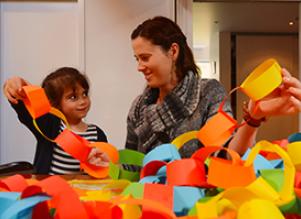8/5/2025
7 Art Projects That Improve Literacy and Reading
For students, it can be difficult to maintain the same level of focus at home as within the school walls, where each day is structured yet provides some variety. When the enriching experiences offered by the physical school environment are finished for the year, the hours can blur together for students trying to remain productive at home during summer break.
Incorporating different approaches like playing board games, dusting off arts and crafts supplies, or otherwise becoming reacquainted with non-electronic pastimes can help students engage while at home. Rather than seeing these fun and creative activities as being separate from home-based learning, why not take the opportunity to integrate the two?
Here are seven art activities to practice reading skills at home for students of all levels that teachers can share with their students and families to help keep their skills sharp and avoid the summer slide:
Foundational Readers
Paper Chains for Word Learning
Word chains are a set of words that change by one sound at a time, and word necklaces go one step further by starting and ending with the same word: bat --> bet --> bit --> big --> pig --> pin --> pit --> pat --> bat. Have children write word chains on interlocking loops of paper to create a necklace.
Photo Booth Phonics
With this fun activity, sounds and letters can be reinforced by having children say each letter as they write their names, along with the sound that the letter makes. Then, they can take photos of items that begin with those letters or sounds.
Foundational and Intermediate Readers
Mapmaking
By reading stories, children travel to incredible places—without leaving home. With this in mind, have your child create a map of a fictional setting from a favorite book. Encourage them to include details from the story, and engage them in discussing different parts of the map as they work.
What's Going on Here?
For parents working to engage their children, find an interesting picture or photo and ask questions about it: What is happening here? What do you think happened just before this photo was taken? What do you think will happen next? Questions like these will help students make inferences based on clues in the words they read or the illustrations they see.
Intermediate Readers
Similes and Metaphors and Figurative Language, Oh My!
Similes are comparisons of two things using like or as: She swims like a fish. Metaphors are comparisons in which one thing is said to be another: Your room is a pigsty. Parents can talk about the meanings of the following similes and metaphors, and have children illustrate each one:
I'm as hungry as a bear.
He was as slow as a snail.
It is as light as a feather.
The mall was a zoo.
My hair is a bird's nest.
You are my sunshine.
Middle-School Students
Just Like Me, Totally Different, or Somewhere in Between?
Comparing and contrasting—looking at how things are alike and how they're different—is a great way to improve reading comprehension. Middle school students can illustrate a character from a familiar book and draw themselves next to the character. Then, they can describe (in writing or out loud) how they're alike and how they're different.
Poetry Slam
Poems are more than just written words, and reading a poem aloud reveals the power of rhythm and rhyme. Students can create a beat to go with an assigned poem or one they find on their own. Just tapping a pencil on a table will work. Then, they can record themselves reading the poem in rhythm with the beat.
Hopefully these ideas will encourage imaginations to soar at home during the summer months!
Teachers, as always, feel free to share these suggestions with your students and families.

